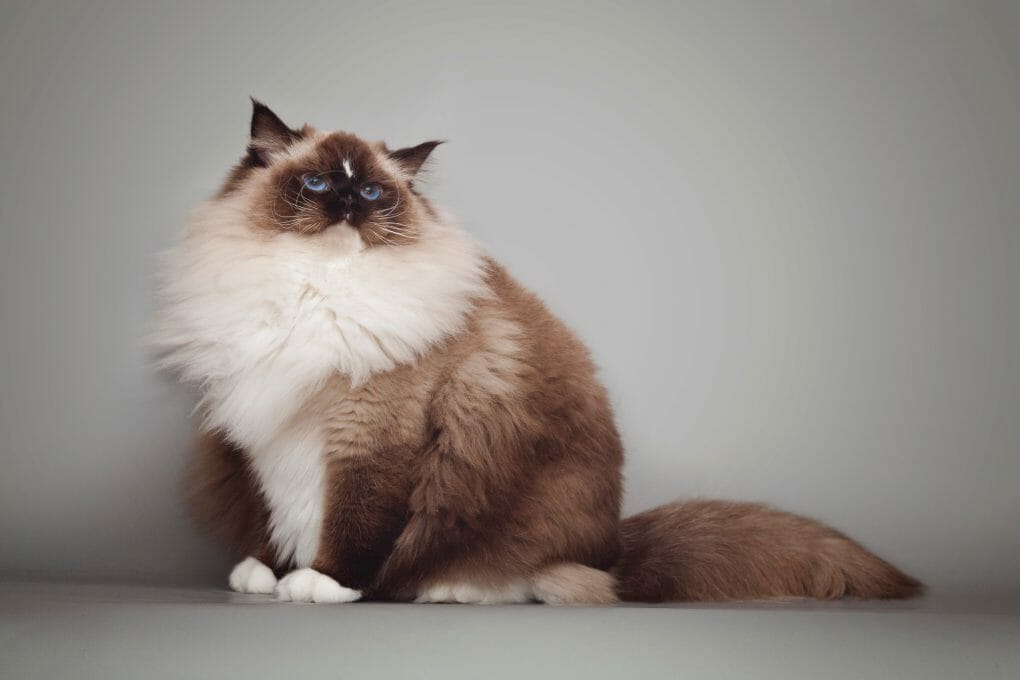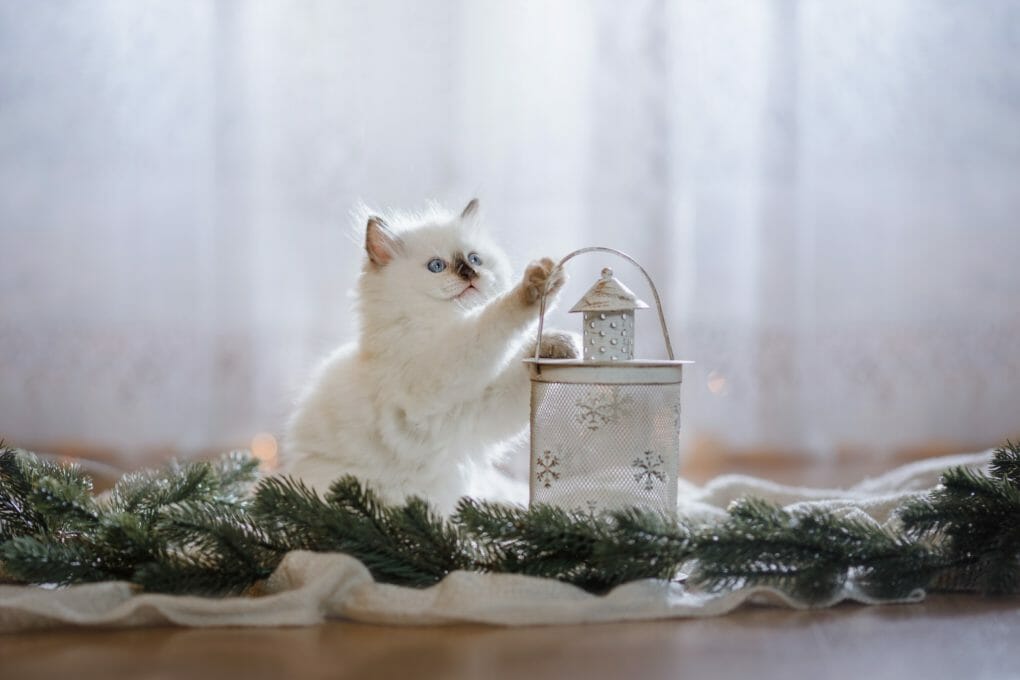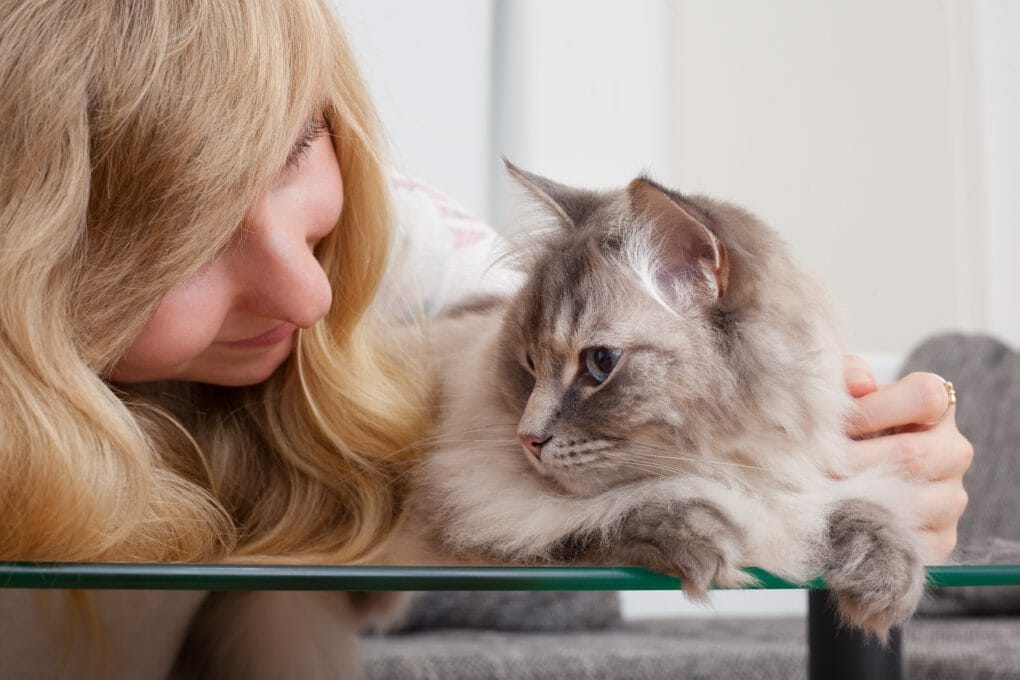When Do Ragdolls Get Their Color: Understanding the Shades of This Breed and Its Color Progression
All Ragdoll cats are born white; they only start getting their color at around 8 to 10 weeks. Over time, as Ragdolls grow and develop, their coats will gradually change color. Ragdoll younglings tend to be lighter in color than adults, but their fur will darken and become more consistent as they age. Ragdolls will have their full coat and color at about three to four years.
The color of a Ragdoll’s coat is determined by the presence or absence of certain pigments called melanins. The two main types of melanins are eumelanin, responsible for black, brown, and gray coloring, and phaeomelanin, responsible for red, orange, and cream coloring. The specific color and pattern of a Ragdoll’s coat are determined by the genetics of the individual cat and the interaction between the different types and levels of melanin.


When Ragdoll cats get sick, their colors might change temporarily as part of their body fights the infection. Ultimately, Ragdoll cats will maintain a steady-colored coat over many years.
Table of Contents
Ragdoll Cat Colors
They Are Born White
Ragdolls are born white. Their coat changes color as they grow and mature. For example, a kitten may be born with light-colored fur and develop darker points (such as on the face, paws, and tail) as it ages because the distribution of melanin in the coat may change as the kitten grows.
If you’re worried about your Ragdoll’s color changing, there’s no need to be. All cats exhibit color changes at different times, so be patient and wait it out.
Younglings Are Lighter in Color
When it comes to Ragdoll younglings, the color sometimes differs from what it seems. Newly born Ragdolls are lighter in color, which will gradually change as they age. So if you’re looking for a specific color, be patient – it may take up to 10 weeks or several months for them to develop their natural coloring.
When breeding Ragdoll younglings, remember that different colors often result from other genes – so choose carefully!
Adults Will Maintain a Steady-Colored Coat Over Many Years
Ragdoll adults will maintain a steady-colored coat over many years. The colors in a Ragdoll’s skin come from the genes passed down through the lines of parent animals. However, you might be surprised to see patches of different colors on your furry friend – this is normal for Ragdolls!
Change of Coat Color in Ragdoll Cats
Body Temperature
As Ragdolls get warmer, their coats change into lighter colors. On the other hand, the areas where it is colder are comparably darker. The color and pattern of a Ragdoll’s coat are determined by genetics and are not influenced by temperature. Ragdolls have a variety of coat colors and patterns, including seal, blue, chocolate, lilac, red, cream, and tortie (a combination of red and cream).
The color of a Ragdoll’s coat may change slightly as they age, as some of their coat colors will darken over time. For example, a kitten’s coat may appear lighter in color than an adult’s coat of the same color. This is a normal process and is not related to temperature.
It is important to note that cats, like all animals, can be sensitive to extreme temperatures and become overheated or chilled if exposed to too hot or too cold conditions. Therefore, it is essential to provide your cat with a comfortable and appropriate environment and ensure they have access to shelter and protection from extreme temperatures.
When They Get Sick


If your Ragdoll cat falls ill, its colors might change. This is due to the hormonal changes that occur during illness. Vets can do various tests to determine the cause of the color change, and then they can commence treatment accordingly.
Keeping your Ragdoll cats healthy is essential for their coat color – make sure to keep an eye on their health and take them to the vet if there is any indication of an illness.
Old Ones Get Darker
Ragdoll cats have striking coloration, and as they age, their coats will gradually become darker until they reach maturity at around three to four years old.
If you want your Ragdoll to retain its original color, it’s essential to avoid exposing it to direct sunlight or artificial light for extended periods. You can help maintain the dark pigment in a Ragdoll coat by feeding them a diet that includes premium cat food to keep them healthy.
A Cause for Alarm
There are times when Ragdolls go through a sudden color change. This change can be due to hormonal fluctuations or changes in diet, but this change is typically mild and requires no medical attention.
Talk to your veterinarian or animal care specialist if you’re concerned about your Ragdoll’s color changes. They can determine the cause and recommend the appropriate course of action. In addition, regular veterinary care is essential to keeping your Ragdoll healthy and colorfully radiant.
Ragdoll Color Progression


Typically, Ragdolls develop their color between 8 and 10 weeks of age. The colors will change gradually as they grow until they reach their final coloration around three to four years old.
Mink Mitted
There is a specific Ragdoll color progression that all mink-mitted Ragdoll cats go through. This color change starts with the parents’ color – usually black and tan. Gradually, as the kitten gets older and grows, its color will change in a gradient from black to white, with spots of tan mixed in.
This Ragdoll color progression occurs at different times for different kittens; some may show it starting as early as a few weeks old, while others might not show any signs until adulthood!
Blue Bi-color
Blue bi-color Ragdolls typically have a blue body with white faces and paws. This changes as the Ragdoll ages – the blue color in their fur fades and is replaced by other colors. The color change is due to melanin production, a natural process in the skin.
Flame
The flame-colored Ragdoll cat color progression is as follows: yellow, orange, red (scarlet or maroon), mauve, blue (indigo), and black.
Seal Mink
Seal mink Ragdolls are a beautiful breed of cat that will undergo a color progression over time. Starting with a light tan color on the body, the cat will gradually transition to dark brown over time. The ears, nose, and lips will also become darker as the coloring progresses.
As with any other animal, there are some variations in coat coloration between Ragdoll cats from different breeding programs – this is part of their beauty! Seal mink Ragdolls are a fantastic breed that you should cherish for their natural beauty and unique coloration.
Blue Lynx
Blue lynx Ragdoll cats have an intense blue coloration. This breed of Ragdoll cat changes colors throughout their lives – often progressing from dark blue to lighter shades. Each Ragdoll has a unique color progression, so it’s essential to study your cat’s genetic history to know when they will reach their adult coloration.
